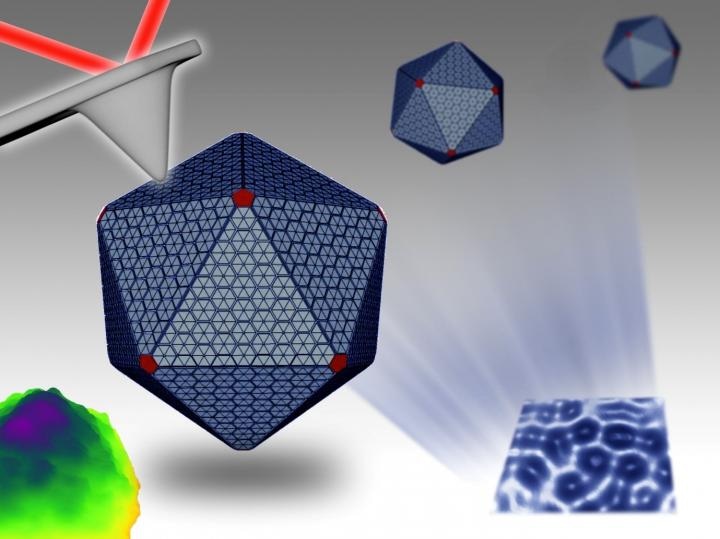Jun 9 2017
Researchers at the University of Liverpool have probed the structure and material properties of protein mechanisms in bacteria, which have the ability to change carbon dioxide into sugar through photosynthesis. Details of this research have been published in the journal Nanoscale.
 This is an illustration of a carboxysome. (Credit: Dr Luning Liu, University of Liverpool)
This is an illustration of a carboxysome. (Credit: Dr Luning Liu, University of Liverpool)
Cyanobacteria are a phylum of bacteria that yield energy and oxygen during photosynthesis, akin to green plants. They are among the most plentiful organisms in fresh water and oceans. Unique internal ‘machines’ in cyanobacteria, known as carboxysomes allow the organisms to transform carbon dioxide to sugar and provide impacts on universal biomass production and the environment.
Carboxysomes are nanoscale polyhedral structures that are made up of different types of enzymes and proteins. So far, little is known about these 'machines' that are constructed and maintain their organization to perform carbon fixation activity.
Structure in nature
A team of Researchers from the University’s Institute of Integrative Biology, led by Royal Society University Research Fellow Dr Luning Liu, examined in depth the native structure and mechanical stiffness of carboxysomes using advanced microscopes and biochemical techniques.
For the first time, the Researchers were successful in biochemically purifying active carboxysomes from cyanobacteria and characterizing their carbon fixation activity and protein composition. They then used atomic force microscopy and electron microscopy to visualize the morphology and internal protein organization of these bacterial machines.
Moreover, the complex mechanical properties of the 3D structures were established for the first time. Though structurally close to polyhedral viruses, carboxysomes were discovered to be a lot softer and structurally flexible, which is associated to their formation dynamics and regulation in bacteria.
It’s exciting that we can make the first ‘contact’ with these nano-structures and understand how they are self-organised and shaped using state-of-the-art techniques available at the University. Our findings provide new clues about the relationship between the structure and functionality of native carboxysomes.
Dr Luning Liu, Research Fellow, Royal Society University
Nanomaterial engineering
The self-assembly and modularity characteristics of carboxysomes make them fascinating systems for Nanoscientists, Bioengineers, and Synthetic Biologists, who aim to discover ways to design new nano-bioreactors and nanomaterials.
We’re now just starting to understand how these bacterial machines are built and work in nature. Our long-term vision is to harness the knowledge to make further steps towards better design and engineering of bio-inspired machines. The knowledge and techniques can be extended to other biological machines.
Dr Luning Liu, Research Fellow, Royal Society University
The project was conducted in partnership with Professor Rob Beynon at the Centre for Proteome Research and the Centre for Cell Imaging and funded by the Biotechnology and Biological Sciences Research Council (BBSRC) and a Royal Society University Research Fellowship.